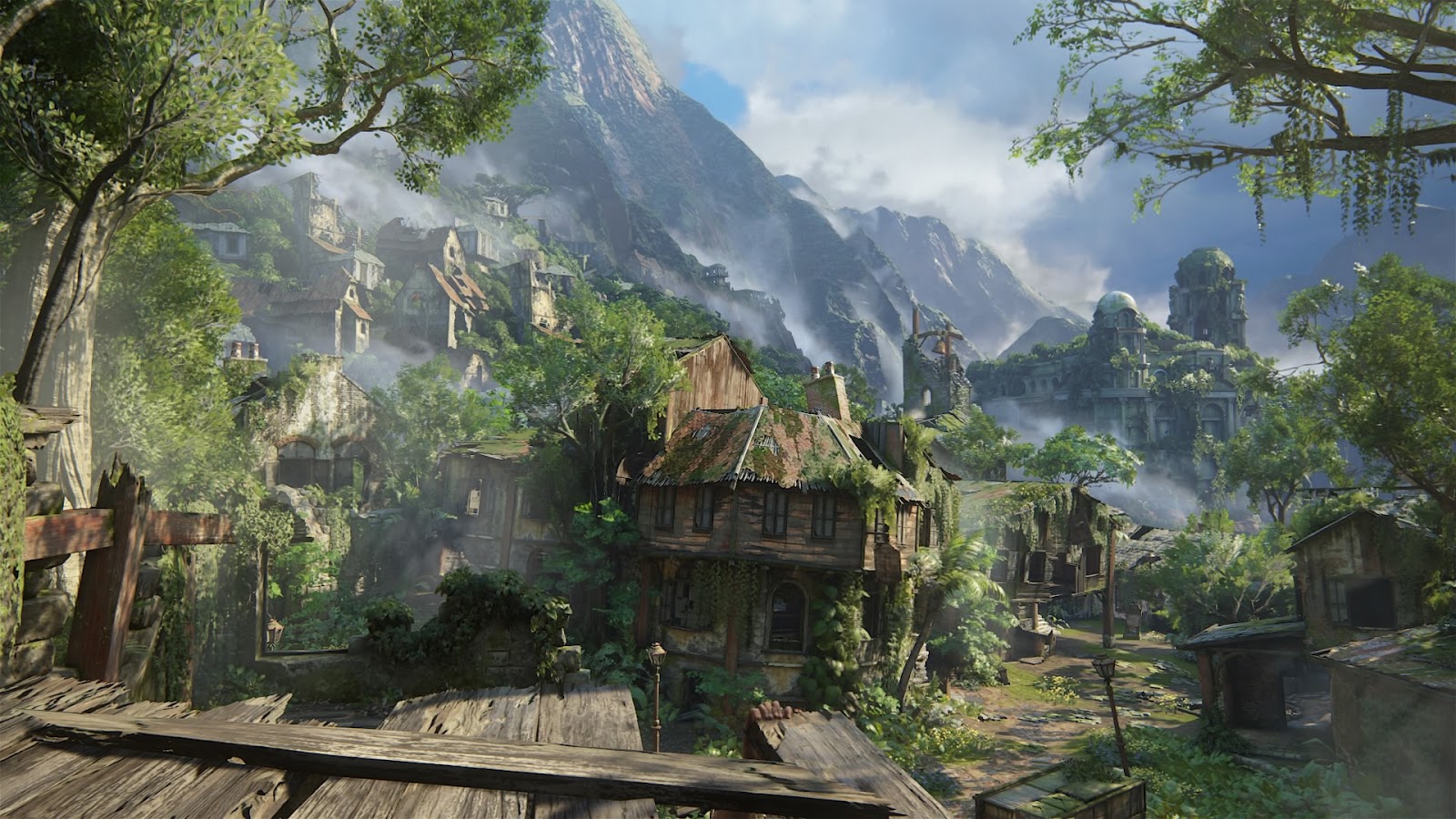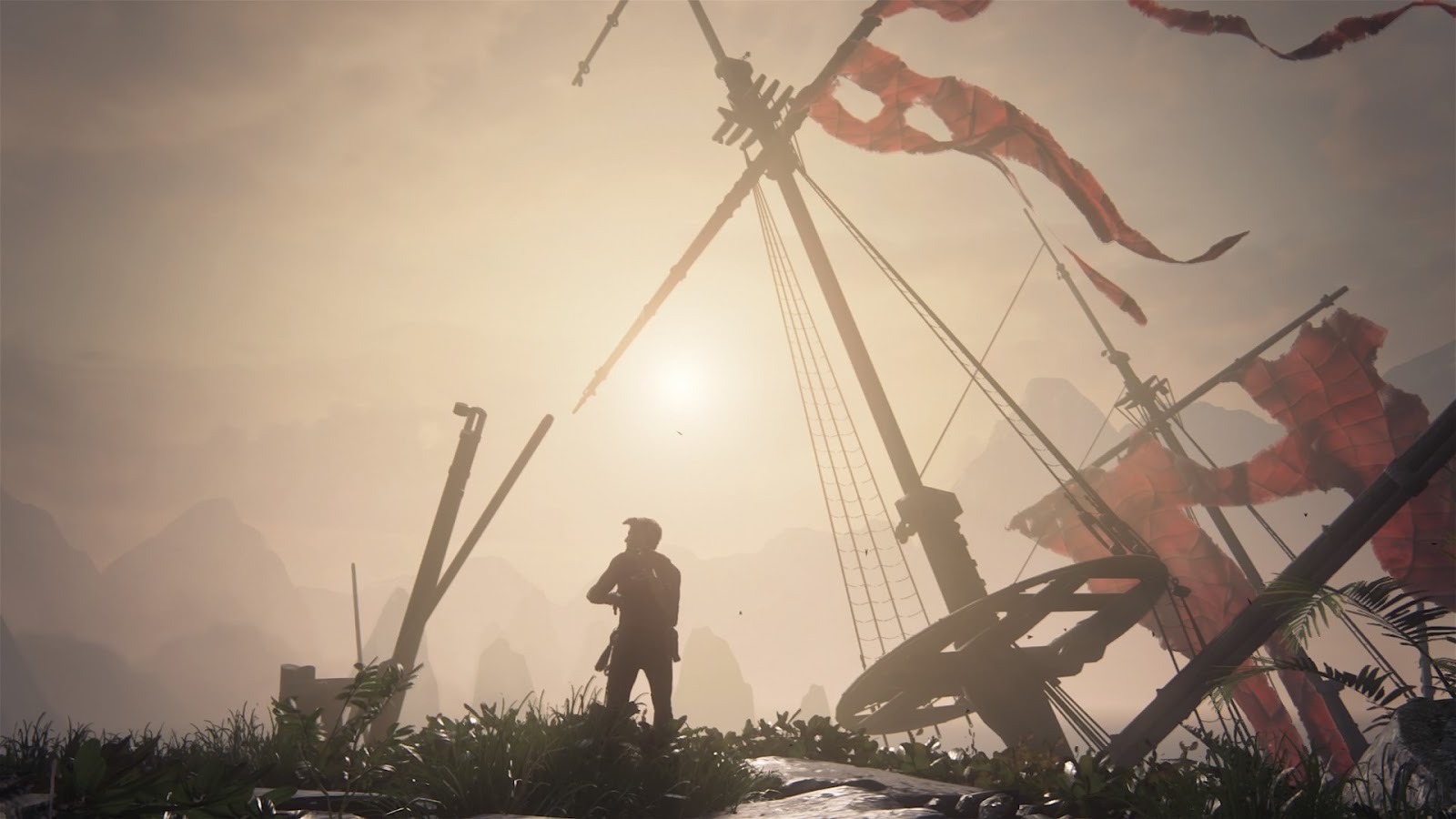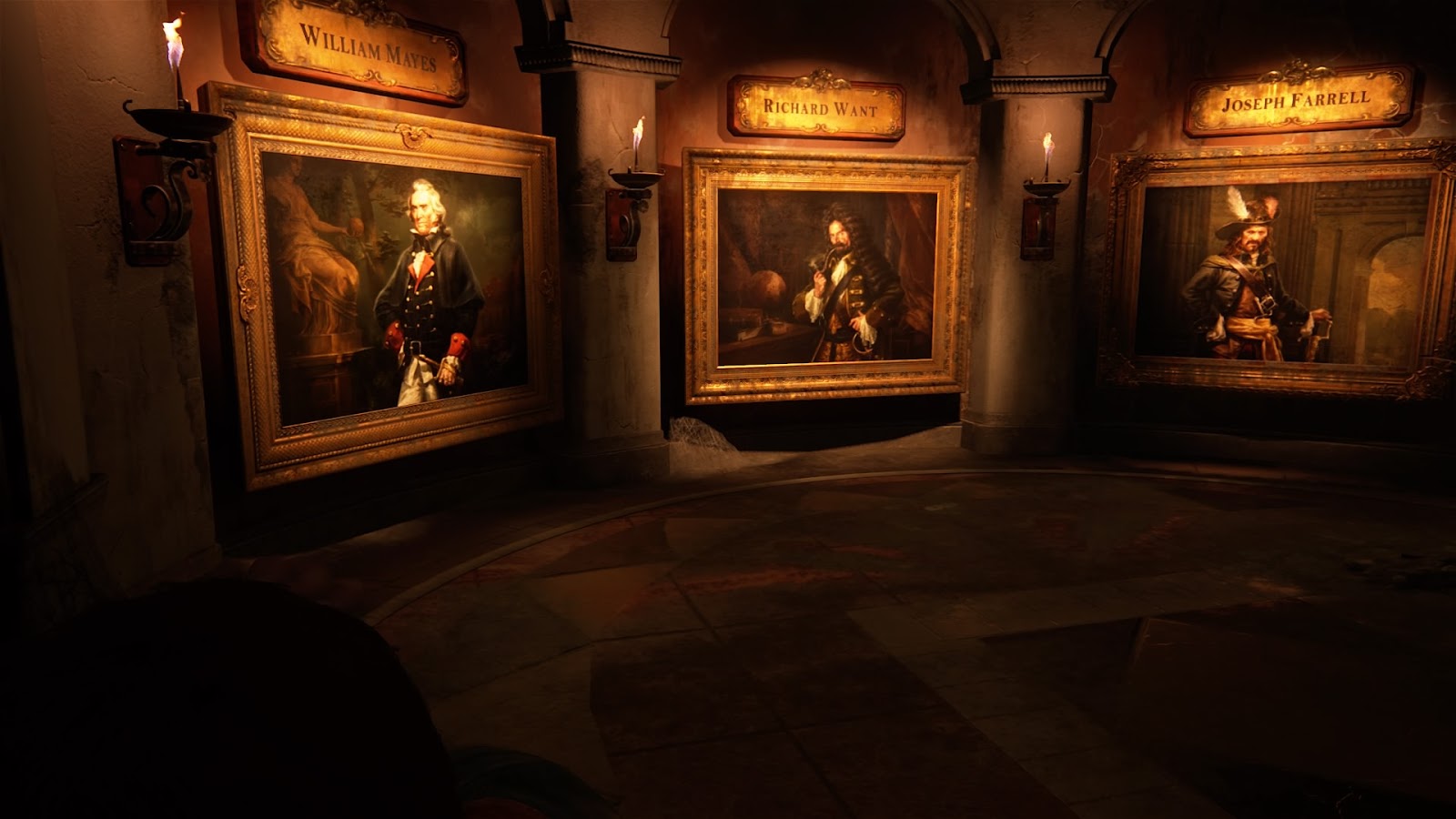If you’ve seen our last stream (Off the Map), you may have heard me admit that I have never played an Uncharted game before. Nor seen an Indiana Jones movie for that matter. Dr. Random very nearly revoked my archaeogamer card. Luckily, Uncharted 4: A Thief’s End rapidly drew me in and my archaeogamer status is safe for now. As for fixing the Indiana Jones gap in my cultural knowledge … trophies first!
During that stream, as we explored the very early beginning of the game, I felt inexplicably drawn into it. It haunted me, I had to find out how the game continued. I found myself literally dreaming of climbing ruins. The treasure fever had struck. I wanted to play the game so badly, but I was worried that I would not be capable of it. I’ve only played one game on a console in my life (Never Alone) and considering the spectacular faceplants in that game, I was not very hopeful. However, Jaromirr reassured me that Uncharted was not a particularly hard type of game to play, so off I went to the shop to pick up a copy. Within a week I had finished the game.
Storylines
Why was I so enchanted by Uncharted? I think for me it begins with the double storyline that draws you in. You want to find out how both storylines develop and unfold – leading to A-ha! moments in game when suddenly it all connects. The historical storyline is related to the treasure of a number of well known 17th century pirates, including their main man Henry Avery (the wiki of his Piratical Career is quite extensive). Deep in my heart, maritime archaeology/history is still my first passion, so this storyline was undeniably fascinating. It helps that the characters were actually real pirates back in the day, sparking moments of recognition of histories I have studied myself. Although pirates and treasure are already pretty ‘hyped’ and popular topics, for a maritime archaeologist the detective work that leads protagonist Nathan Drake to follow the trail to this coveted treasure is extra exciting. For a museologist, it is actually also an interesting (if not particularly challenging) research project of a collection biography: how did the objects in this treasure move from location to location and change ownership? Anthropologically, through the game we can study and explore how these real pirates fictionally lived together in communities. Through the game you can archaeologically look at the remnants of this society and interpret how their lives may have looked and even ponder upon how they may have died.

The second storyline is the modern, complex and personal history of Nathan Drake and the people closely surrounding him. This storyline mainly develops over three different time periods (the ‘present’, an adult past 15 years ago and a childhood period). By understanding Drake’s past, his behavior and actions in the ‘present’ are given a foundation and thus ‘make more sense’. One understands why he chooses to respond in certain ways when choices are placed before him. His past and his family history provides a background for his interest in artefacts and ancient cultures – he is actually quite knowledgeable for an amateur archaeologist / professional salvage diver. It also explains why he reluctantly (yet expertly) uses violence to reach his goals. At times, we can even recognize remorse at destroying heritage and sites. Actually, in the ‘present’ he appears to be ethically against unlicensed treasure hunting, yet situations force his hand to operate in unethical ways…
Social immersion
Playing Uncharted 4 made me feel like I was creating and developing a novel or a movie. Even though the game does not offer players any significant agency in the progression of the storyline (basically: the story happens the same way, no matter how you play it), I still felt like I was creating the story. This is because the characters are sufficiently deep and the story so all-encompassing that you are able to emotionally invest in the characters; the plot-twists actually affect you directly. When a flashback reveals more of Drake’s past, you feel responsible. This sort of immersion is, of course, what makes games unique over other entertainment media, but not every game is this focused on the story. You, as a player, in some way ‘become’ Nathan Drake and what happens to him in the game somehow affects you (and I don’t mean when you fling yourself off a cliff in frustration to force a respawn because he’s not climbing where you want him to climb – I mean the actual events of the game).
Although people might complain about the awkward conversations in the game, the lame jokes and puns or the fact that the dialogue choices do not affect the plot… I actually enjoyed the ongoing banter. I quite liked having Drake and his companion(s) engage in ongoing conversations or comment on the landscape around them. It gave a social aspect to a game that is otherwise quite solitary. Sure, the fourth time you go through the game it gets kind of annoying and scripted, but on a first run through it really adds to the immersion.

Design
Beyond the exciting task of unravelling two storylines simultaneously, the design of the game was quite possibly my second favorite aspect. As a maritime archaeologist/museologist I do love me my ruins. There are plenty of these in the game and damn they are gorgeous. My favorite chapters in the game were those where I can peacefully explore every nook, cranny, basement and roof of these submerged or overgrown ruins. Combat is not really my cup of tea. I like looking out over the landscape and admiring the view. I also enjoy getting close to detailed 17th century-style oil paintings of pirates and stroll around at my leisure like I am in a museum gallery.

The character design is also really impressive; the facial expressions, body movements, are all super realistic. Sure, you can still tell that it is a game, but it is truly masterful. It makes me wonder why I even still play something like World of Warcraft (for the social game play and the challenging end content .. with heaps of nostalgia, I suppose).
Ultimately, within this gorgeous setting, I loved that I was able to live out my own (unethical or unrealistic) maritime career fantasies in a fictional world. I got to wreck dive, visit a private museum, discover lost ruins, explore the remains of an ancient society and solve a centuries’ old historical mystery. Best of all: no artefacts were harmed in the fulfilment of this fantasy.
